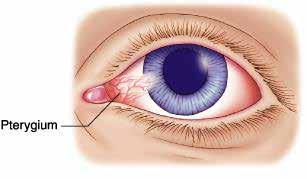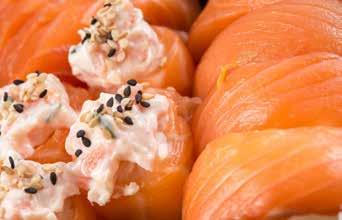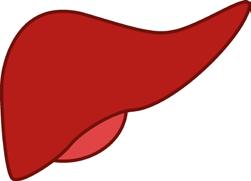
4 minute read
What is Pterygium - by OPSM
What Is Pterygium?
A Pterygium is a benign growth of the conjunctiva, which is primarily caused by ultraviolet-light exposure; sometimes associated with low humidity, windy and dusty conditions. A Pterygium itself is harmless but, when this is starting to grow over the cornea, it can create an astigmatism (irregular focus in vision) and discomfort from dry or itchy eyes and foreign body sensation with lids catching the Pterygium during blinking. It can also leave a permanent redness appearance on the conjunctiva.
Advertisement
They usually grow slowly over time, but sometimes they can grow rapidly and, in that case, they can invade the cornea and lead to permanent vision loss by obscuring the optical centre of the cornea (e.g. by covering light going through the pupil). To reduce the risk of developing a Pterygium or to slow down the existing Pterygium, wearing protective sunglasses and/ or a hat is very important and regular use of artificial tears is useful. Polarised lenses in particular are useful, as they blocks 100% of UV rays reflecting off the surface of ground and water.
There are surgical options available to get rid of a Pterygium, but this is usually only recommended if there is a sign of rapid change in vision due to its growth or if it is causing ongoing discomfort, and/or if it has grown close to the centre of the cornea.
If you have chronic red eye problems, or if you already have a white or yellow lesion growing over the conjunctiva, it is a good time to have an eye examination.
If you would like any further information on this subject, or any other eye related issues, please call 09 426 7902 to make an appointment with local Optometrists James or Zaria, at OPSM in the Silverdale Centre (Near Countdown).
By James Park BOptom (TPA Endorsement)

OPSM SILVERDALE OFFERS FREE EYE TESTS TO ALL SOUTHERN CROSS HEALTH
SOCIETY MEMBERS^

Southern Cross Health Society members can also save 15%* on a wide range of quality prescription glasses, non-prescription and prescription sunglasses.
OPSM Silverdale
Silverdale Centre Shop 11B 61 Silverdale St Silverdale, AUK 0932 Tel: (09) 426 7902
opsm.co.nz
^ Offer is applicable on a Standard Eye Test at OPSM plus a digital retinal scan. Available for Southern Cross Health Society members only (excludes travel insurance policy holders). Please present your Southern Cross membership number or card to redeem offer. Subject to appointment availability. Excludes contact lens examinations. Offer only available once per eligible member every two years. Offer is not transferrable to another person. *Excludes eye tests and contact lens consultations and designer brand frames and sunglasses by Chanel and Maui Jim products. Health fund discounts are not available in conjunction with any other offer, discount or benefit other than the
Southern Cross Health Society Easy-Claim.
Iron Deficiency
Iron deficiency anaemia is one of the most common deficiencies worldwide. Here in New Zealand, approximately 29% of children under 15 are iron-deficient. It is ten times more common in females than males. Signs of deficiency include fatigue, weakness, headaches, poor immune system function, angina or chest pain, difficulty concentrating and pale skin and gums. Iron, folate and vitamin B12 are the main nutrients needed for our bodies to be able to manufacture red blood cells and haemoglobin. Red blood cells contain haemoglobin, which enables them to carry oxygen. Fatigue occurs when there are not enough healthy red blood cells to carry adequate oxygen to our tissues. Iron is crucial for brain development in babies and toddlers – in fact; they require more iron than an adult male.
Recommended daily requirements for Iron vary – depending on age, gender and life stage – from 8 mg per day to 27 mg. Babies, teenagers, pregnant women, vegetarians and athletes – especially endurance runners – need more than most. Certain intestinal disorders like Crohn’s disease and coeliac disease can impair the body’s ability to absorb iron and so this
increases their iron requirements. People on very low calorie diets often do not get enough iron in their diets. Blood tests can determine if you are iron-deficient.
There are two different types iron: haem and non-haem iron. Haem iron is only found in animal sources such as meat, liver, fish and chicken and is easily absorbed by the body. Non-haem iron is found in plant foods, but is much more difficult for the body to absorb. One of the things you can do to improve iron absorption is to eat vitamin C-rich foods with non-haem iron-containing foods. Tannin in tea and coffee reduces the amount of iron our bodies can absorb from food, so make sure you wait at least half an hour before or after a meal to enjoy these drinks. To learn how to further optimise your Iron intake, it’s worthwhile discussing this with a qualified nutritionist.


Supplements should only be taken on the advice of a doctor, as high levels of iron can reduce the absorption of other essential nutrients such as calcium and zinc. It’s always best to try and get the nutrients our bodies need from food, as they are perfectly designed to best provide for our body’s requirements.
You can find me on Facebook as NutritionSense, for regular posts on health-related topics and recipes.
By Paula Southworth Nutritionist & Health Coach (BSc Human Nutrition and Sports Science)
www.nutritionsense.co.nz
ROD HARMAN MOTORS LTD
Automotive Repairs • Servicing WOF Testing
1/8 Curley Ave, Silverdale Ph (09) 426 6066
Shona leggett
Counsellor, mnzac 021 036 1300










